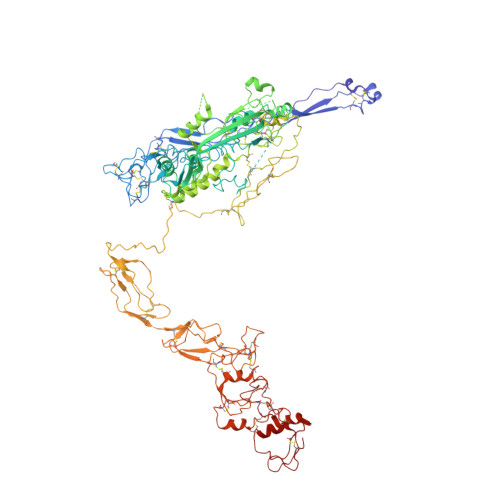Assembly and Regulation of the Membrane Attack Complex Based on Structures of C5B6 and Sc5B9.
Hadders, M.A., Bubeck, D., Roversi, P., Hakobyan, S., Forneris, F., Morgan, B.P., Pangburn, M.K., Llorca, O., Lea, S.M., Gros, P.(2012) Cell Rep 1: 200
- PubMed: 22832194
- DOI: https://doi.org/10.1016/j.celrep.2012.02.003
- Primary Citation of Related Structures:
4A5W - PubMed Abstract:
Activation of the complement system results in formation of membrane attack complexes (MACs), pores that disrupt lipid bilayers and lyse bacteria and other pathogens. Here, we present the crystal structure of the first assembly intermediate, C5b6, together with a cryo-electron microscopy reconstruction of a soluble, regulated form of the pore, sC5b9. Cleavage of C5 to C5b results in marked conformational changes, distinct from those observed in the homologous C3-to-C3b transition. C6 captures this conformation, which is preserved in the larger sC5b9 assembly. Together with antibody labeling, these structures reveal that complement components associate through sideways alignment of the central MAC-perforin (MACPF) domains, resulting in a C5b6-C7-C8β-C8α-C9 arc. Soluble regulatory proteins below the arc indicate a potential dual mechanism in protection from pore formation. These results provide a structural framework for understanding MAC pore formation and regulation, processes important for fighting infections and preventing complement-mediated tissue damage.
- Crystal and Structural Chemistry, Bijvoet Center for Biomolecular Research, Department of Chemistry, Faculty of Science, Utrecht University, Padualaan 8, 3584 CH Utrecht, The Netherlands.
Organizational Affiliation:





















